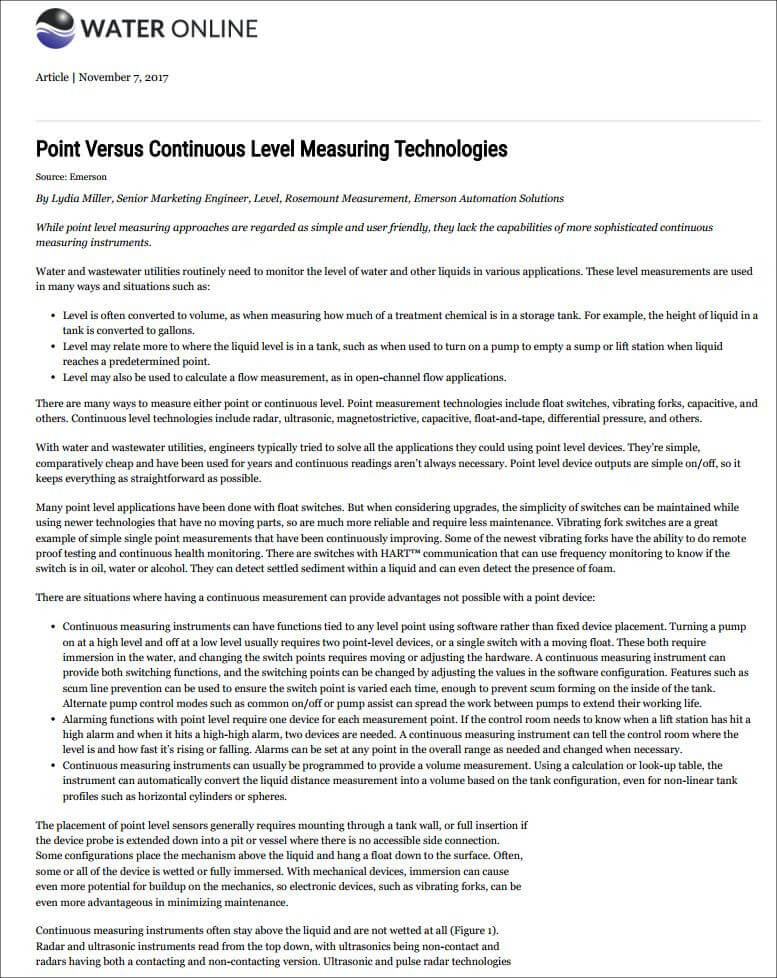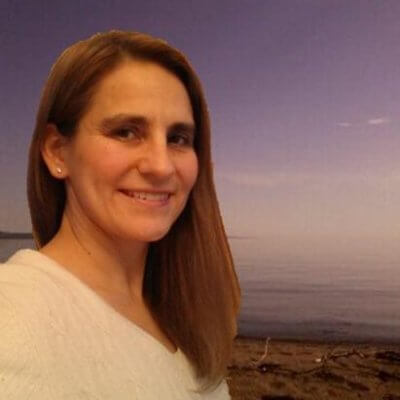 In a Water Online article, Point Versus Continuous Level Measuring Technologies, Emerson’s Lydia Miller provides guidance on the technologies and which ones are best suited for particular applications.
In a Water Online article, Point Versus Continuous Level Measuring Technologies, Emerson’s Lydia Miller provides guidance on the technologies and which ones are best suited for particular applications.
Lydia opens noting that level measurements are not just for determining the height of the liquid in vessels, but also are used to calculate volume, flow rate, and as inputs for pump control.
She describes the range of common level measurement technologies:
Point measurement technologies include float switches, vibrating forks, capacitive, and others. Continuous level technologies include radar, ultrasonic, magnetostrictive, capacitive, float-and-tape, differential pressure, and others.
Point-level measurements are often used because:
They’re simple, comparatively cheap and have been used for years and continuous readings aren’t always necessary. Point level device outputs are simple on/off, so it keeps everything as straightforward as possible.
Technology has advanced where some types of point-level switches, such as vibrating fork switches can have diagnostics as proving capabilities when used in safety instrumented system applications:
Some of the newest vibrating forks have the ability to do remote proof testing and continuous health monitoring. There are switches with HART™ communication that can use frequency monitoring to know if the switch is in oil, water or alcohol. They can detect settled sediment within a liquid and can even detect the presence of foam.
Lydia highlighted advantages continuous level measurement devices had over point level measurement devices. Levels can be set in the control system instead of manually at the device, use of a single device instead of two for high and low level indication/control/alarming/etc. points, changing level setpoint to prevent scum line buildup, use in real-time volume calculations, and more.
Technologies such radar (guided wave & non-contacting) and ultrasonic:
…stay above the liquid and are not wetted at all… Radar and ultrasonic instruments read from the top down, with ultrasonics being non-contact and radars having both a contacting and non-contacting version. Ultrasonic and pulse radar technologies send sound or microwave energy from a transducer toward the liquid, and calculate distance by timing how long it takes for the pulse to be reflected back.
Read the article for more on the advantages of the level measurement technologies and data they can provide in improving operational performance through early problem detection, process flexibility, and increased efficiency.
You can also connect and interact with other level measurement and water & wastewater industry experts in the Level and Water and Wastewater groups in the Emerson Exchange 365 community.

